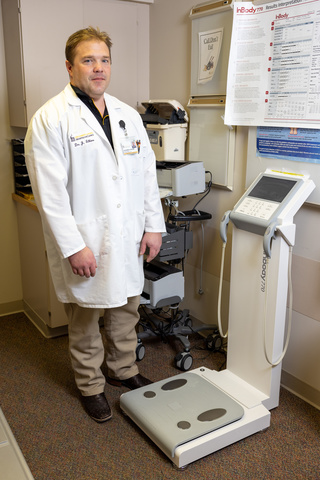Total hip and total knee replacement are two of the most common and successful surgeries in all of medicine. However, complications do occur. One of the most well-recognized risk factors for complications following joint replacement is obesity, specifically morbid obesity. Given the technical challenges of joint replacement in this population, as well as the very high risk of complications, many orthopedic providers use a cutoff based on the patient’s body mass index (BMI) as to whether the patient is a candidate for surgery. Unfortunately, many patients in our community are dealing with crippling arthritis and are unable to reduce their body weight below this threshold, resulting in a large population of Iowans being denied surgical treatment. Here at the University of Iowa, we recognize that bodies come in several shapes and sizes, and a single BMI value does not accurately reflect one’s risk for complications.

Jacob M. Elkins, MD, PhD, has established a multidisciplinary bariatric hip and knee reconstruction clinic to address this concern. Central to this clinic is the use of a multi-frequency segmental body bioimpedance analyzer (InBody 770), which permits accurate determination of body composition, including segmental muscle mass, total body fat, extra cellular water, phase angle, visceral body fat, etc. Using a multidisciplinary approach involving our partners in bariatric surgery, weight management, and nutrition, individualized pre-operative optimization plans are established. Routine clinic follow-up visits track progress and make further recommendations as needed. Surgery—if still desired—follows successful completion of the program and follows specific protocols aimed to minimize complications.
The role of body composition in joint replacement is an active area of research with many basic and clinical projects currently underway, involving collaborations with many partners from industry. Moving forward, we wish to establish a center of excellence, demonstrating that an excellent outcome is a possibility for all patients.